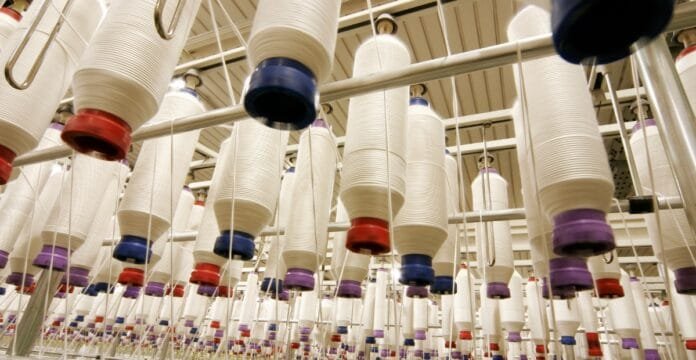The entire journey of spinning polyester from raw materials to fabric is polyester’s very own interesting adventure. It begins with polyester being a synthetic fiber that is a by-product of petroleum. It goes through a melting and shaping stage and is turned into fine threads. These threads must be smooth and strong, and they must be able to be spun. The objective is to convert these threads into yarns that can be woven or knitted into textiles. Each stage requires science, technology, and skill to acquire fabrics that we use in our daily lives.
From Raw Material to Fiber Creation
The spinning process begins with the fibers. These fibers must be newly spun, as polyester can be produced through a series of chemical reactions that can create molten polymer. The molten polymer must then be pushed through tiny holes to create long filaments. These filaments, once cooled, must be cut or stretched to improve flexibility and strength. This stage of spinning polyester is very important as it determines the end product’s quality.
As with any product, the fibers must also go through a cleaning stage. This stage must eliminate any unwelcomed particles. During the yarn production, the attention to detail will ensure a smooth finish, and a long lasting fabric.

Preparing the Fibers for Spinning
An important step in the spinning process of polyester is preparing the fibers. To begin with, fibers undergo combing or carding to make them smoother and more orderly. In carding, the fibers are separated, while combing removes the shorter pieces. As a result, the fibers become more uniform and can be twisted into yarn more easily.
At this point, different fibers can be blended if needed. For instance, it may be beneficial to combine polyester with cotton to make fabrics that are strong yet comfortable. Proper preparation of polyester improves the quality of the yarn and ensures it is ready for the next step.
The Spinning Stage
In spinning polyester, the stage of spinning refers to the stage in which the fibers are changed into yarn. First, the prepared fibers are drawn out into long and thin strands. Next, these strands must be twisted to ensure they have strength. In fact, the tighter the twist, the more strength the yarn will have.Additionally, tighter twist will enhance the smoothness of the fabric.Now, this stage can be done much faster and accurately because of modern machines. They can spin large amounts of polyester yarn quickly. This enables textile manufacturers to produce consistent and high quality materials for different textile applications.
Winding and Finishing the Yarn
The next step for spinning polyester is called winding, where the yarn is further organized into large spools or cones. This step ensures that the yarn is neat for the next processes like weaving or knitting. Additionally, any imperfections like faults or knots are fixed, guaranteeing that the yarn will run smoothly during subsequent production steps.
Improving a yarn’s characteristics and adding special functionalities are, for instance, examples of finishing. Furthermore, softness or anti-wrinkle resistance are two treatments that can be added. Ultimately, these enhancements will improve the polyester fabric’s quality and make it suitable for the textile industry.
From Yarn to Fabric
The final step in spining polyester is the fabrication of yarn into a fabric. The yarn can be woven or knitted which results in different textures and patterns. Woven polyester fabrics are stiffer and more durable, while knitted fabrics are softer and more stretchy. The choice is dependent on the end product, be it clothing, upholstery or sportswear.
After knitting or weaving, next dyeing or printing can be done. This stage is a finishing step that gives polyester fabrics the intended aesthetics. Moreover, with a thoughtful design and well-planned finishing processes, polyester can be made to look and feel luxurious.
Why Spinning Polyester is Important
The task of spinning polyester is critical since it determines the quality of the final fabric. Effective spinning will produce yarns which are strong, smooth, and versatile. Clothing, home textiles, and even industrial fabrics showcase polyester’s remarkable versatility. It is also popular due to the low likelihood of shrinking or wrinkling.
Control of polyester’s texture, appearance, and strength attributes is critical for meeting the expectations of the designers and consumers. Thus, understanding how polyester is spun provides manufacturers a critical decision-making lever.
Final Thoughts
The various stages such as the creation of fibers and the weaving of the fabric, convert the material from liquid polymer to fine fabric. They are all critical. Through modern technology, the careful spinning of the polyester yarn to ensure it is strong and versatile, has become quick and efficient. The versatile style and enduring durability of polyester fabrics continue to make them a popular choice.
FAQs
What is the process of spining polyester?
It is the method of turning polyester fibers into yarn and then into fabric.
Why is spinning polyester important?
It creates strong and smooth yarns that make durable fabrics.
Can polyester be blended with other fibers?
Yes, it can be blended with fibers like cotton for added comfort.



